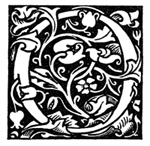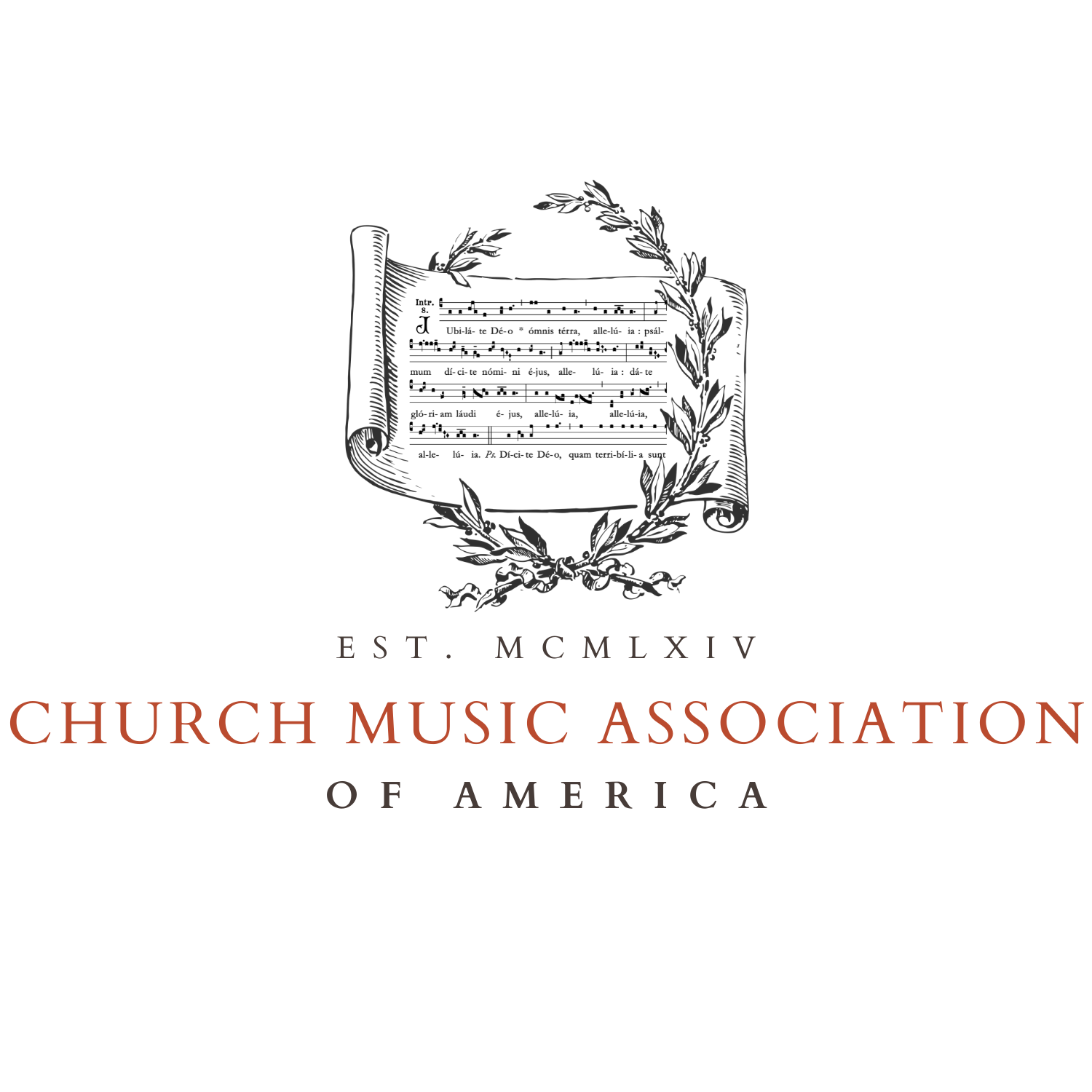From the Winter issue of Sacred Music, volume 135, number 4
 ur liturgical choices depend upon our understanding of what sacred means, particularly in music, because many contend that there is no such thing as sacred or non-sacred music. Many years ago, Msgr. Schuler contended that notes are not sacred, but it is the associations of music which bring to it the connotation of sacred. I would like to explore that notion, placing it in the context of “reception.”
ur liturgical choices depend upon our understanding of what sacred means, particularly in music, because many contend that there is no such thing as sacred or non-sacred music. Many years ago, Msgr. Schuler contended that notes are not sacred, but it is the associations of music which bring to it the connotation of sacred. I would like to explore that notion, placing it in the context of “reception.”
We have two similar words in English, but they have important differences: “Sacred” and “holy;” Latin has similar, but not quite identical words, sacer and sanctus. “Sacred” is a participle, expressing the object of some action; something sacred has been set aside, dedicated to a particular and noble purpose. Holy, on the other hand, refers to the intrinsic aspect of the other, a quality of being whole, complete, perfect, even health-giving, saving. We call a saint holy, but a bishop sacred, the Mass holy, but the liturgy sacred. “Sacred,” then, emphasizes a substantial component of reception—things not naturally taken to be sacred can become so by usage; it concerns things that have been set aside for the service of the holy. But there is another consideration: Some things are more apt for the service of the holy than others; their characteristics are congruent with their sacred use.
The reception of sacred things can be one of two different kinds. Take, for instance, the vestment used for Mass, the chasuble. It was in Roman times a normal outer garment; presumably, it was worn by the priest when he said Mass. In the course of time, it became obsolete as a conventional garment but was retained by the priest celebrating Mass, and so ultimately it became received as an exclusively sacred garment. Thus, something originally secular can be assimilated to a sacred context by gradual reception. This is not all, however; the chasuble is apt for its purpose, because it is an encompassing garment, covering the whole body, symbolizing the transformation of the priest into an alter Christus. Moreover, in the process of sacralization of the garment, it takes on more sacred characteristics: its form becomes more ample, the materials chosen for it become more precious (traditionally silk), and it takes on sacred symbols. This is, then, a matter of the evolution of a gradual reception, a transformation of something secular into something unambiguously sacred.
The other kind of reception is of things perceived as always having been sacred, since time immemorial. Incense is an example of that. Incense was already used in the Hebrew temple, and in spite of the theories of some rationalists that its purpose was to cover the stink of animal sacrifice (which it may have done), its stated sacred purpose was to represent the ascent of prayer; see Psalm 140:2, dirigatur oratio mea sicut incensum in conspectu tuo (let my prayer be directed as incense in thy sight). It is apt for its purpose, because it visually ascends; its fragrance is unlike anything else, and so it can be easily recognized as set aside; it is a precious material, the immolation of which constitutes a worthy sacrifice, and its use is ample. There are those who would say that it came to the Western Church from the Byzantine court, which was a secular one; the Byzantine Emperor, however, was received very much as a sacred person, and the use of incense there must also have been sacred.
I draw this distinction between those things always received as sacred and those whose reception evolves gradually, because the same distinction can be drawn with music. Gregorian chant has always been received as sacred; the early fathers of the church jealously guarded the sacredness of the music of its liturgy, and though this is pure speculation, its earliest stages were probably based upon Jewish precedent, also sacred. Over its history, it has maintained the distinction of being exclusively sacred; even though it may be quoted occasionally in concert music, its presence there serves to bring an element of the sacred to the concert. Moreover, its musical style is apt for sacred use: its non-metric rhythm conveys a sense of transcending the temporal limits of the here and now; its unison singing represents a unified voice, suitable to its sacred usage; its most melismatic forms are so ample as to preclude its employment for any mundane purpose; and its intimate link with the texts and actions of the sacred liturgy identify it with the sacred purposes of the liturgy. Its unambiguous sacred reception forms, then, a bedrock of the sacred in the liturgy.
Sacred polyphony evolved out of Gregorian chant, elaborating several voice parts upon the sacred chant melodies. But it had an important interaction with the secular; once the process of elaboration upon chant was developed, whether it was in a cantus firmus style or in thorough-going imitation, it was employed in both sacred and secular contexts. The interaction of the sacred and secular in music came to an important point with the Renaissance Mass, in which a secular piece, whether monophonic or polyphonic, was the basis of a Mass. This is often cited as evidence of a lack of distinction between sacred and secular in the Renaissance, but I would contend that it is evidence of a more important process. A Mass based upon the tune, such as “L’Homme armé,” incorporates that tune in long notes—a cantus firmus, and in an intricate and learned polyphonic texture. It is no longer just the tune, but a part of a larger whole, whose sacred character is unmistakable. Thus, the secular has been sacralized, turned to a sacred purpose through an apt stylistic transformation.
This is entirely appropriate to a Christian world view. The sacred is not something simply merely separated from the world; rather the sacred transforms elements of the world to a transcendent purpose. The Eucharist is the most outstanding example: what was ordinary food for the Hebrews was transformed into the Passover meal; this, in turn was transformed into the Body and Blood of Christ. Bread and wine, elements of natural nourishment, progressively became transcendent, supernatural, saving nourishment. In my study of the Medieval Sarum Rite of England, I concluded that, contrary to the theorists of comparative religion, who looked to the opposition of sacred and profane (in the sense of secular), the medieval (and Christian) sense of the sacred was that the important differences were between the more sacred and the less sacred, and the continuity of these was more important that their opposition.
In music, the transformation of elements of our ordinary world conveys the message that our ordinary lives can also be transformed. The hitch is: what if the incorporation of music into the liturgy does not involve a discernable transformation? What if the use of styles clearly identifiable with worldly and secular purposes retain their identity in liturgical use? Is the message, then, that there is no transformation? that the secular life-styles are all that there is? I would contend that this is the danger of the present use of secular styles, since the instruments they use, their vocal styling, their simplistic musical construction all retain their secular identity. Rather, it is crucial that whatever musical styles are used in the liturgy, there be clear elements of their sacralization, that their incorporation is unambiguously for the sake of transformation into something sacred. The regular use of a few pieces of Gregorian chant and of sacred polyphony can be enough to signal that difference, to inspire a congregation to higher purposes in their participation in the liturgy.
I am reminded of the principal Sunday Mass as a certain Midwestern cathedral; I attended it some five years ago, and there was a typical repertory of music in popular styles, some of the latest compositions for the Ordinary of the Mass, all accompanied by a heterogeneous and not particularly excellent instrumental group—piano, flute, drums, string bass, guitar—that gave a rather “scrappy” tone to the whole proceeding. It was clear that the musicians were dedicated, but the total effect was ambiguous and unfocused. I returned to that Mass last year, and heard an excellent organ in the loft played by an expert organist. The priest sang most of his parts, and a choir provided some worthy attempts at sacred polyphony. Much of the music was the same as the time before, but now the priest’s singing, the organ accompaniment, and the presence of sacred polyphony gave a sense of purpose and focus that was entirely different. It was not the ideal, but in it the ideal was discernable, and in my view, that is real progress, a kind of progress we are now witnessing in many places.
__________
Professor William Mahrt teaches musicology at Stanford University and is president of the Church Music Association of America and editor of Sacred Music. mahrt@standford.edu
